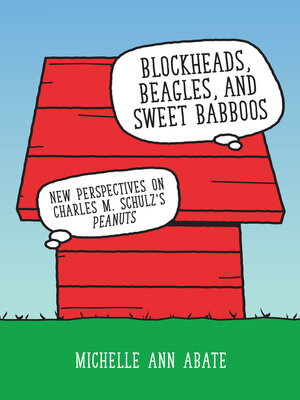Blockheads, Beagles, and Sweet Babboos
ebook ∣ New Perspectives on Charles M. Schulz's Peanuts
By Michelle Ann Abate

Sign up to save your library
With an OverDrive account, you can save your favorite libraries for at-a-glance information about availability. Find out more about OverDrive accounts.
Find this title in Libby, the library reading app by OverDrive.



Search for a digital library with this title
Title found at these libraries:
| Library Name | Distance |
|---|---|
| Loading... |
HONORABLE MENTION RECIPIENT FOR THE 2024 CHARLES HATFIELD BOOK PRIZE FROM THE COMICS STUDIES SOCIETY
Blockheads, Beagles, and Sweet Babboos: New Perspectives on Charles M. Schulz's "Peanuts" sheds new light on the past importance, ongoing significance, and future relevance of a comics series that millions adore: Charles M. Schulz's Peanuts. More specifically, it examines a fundamental feature of the series: its core cast of characters. In chapters devoted to Charlie Brown, Snoopy, Lucy, Franklin, Pigpen, Woodstock, and Linus, author Michelle Ann Abate explores the figures who made Schulz's strip so successful, so influential, and—above all—so beloved. In so doing, the book gives these iconic figures the in-depth critical attention that they deserve and for which they are long overdue.
Abate considers the exceedingly familiar characters from Peanuts in markedly unfamiliar ways. Drawing on a wide array of interpretive lenses, Blockheads, Beagles, and Sweet Babboos invites readers to revisit, reexamine, and rethink characters that have been household names for generations. Through this process, the chapters demonstrate not only how Schulz's work remains a subject of acute critical interest more than twenty years after the final strip appeared, but also how it embodies a rich and fertile site of social, cultural, and political meaning.
Blockheads, Beagles, and Sweet Babboos: New Perspectives on Charles M. Schulz's "Peanuts" sheds new light on the past importance, ongoing significance, and future relevance of a comics series that millions adore: Charles M. Schulz's Peanuts. More specifically, it examines a fundamental feature of the series: its core cast of characters. In chapters devoted to Charlie Brown, Snoopy, Lucy, Franklin, Pigpen, Woodstock, and Linus, author Michelle Ann Abate explores the figures who made Schulz's strip so successful, so influential, and—above all—so beloved. In so doing, the book gives these iconic figures the in-depth critical attention that they deserve and for which they are long overdue.
Abate considers the exceedingly familiar characters from Peanuts in markedly unfamiliar ways. Drawing on a wide array of interpretive lenses, Blockheads, Beagles, and Sweet Babboos invites readers to revisit, reexamine, and rethink characters that have been household names for generations. Through this process, the chapters demonstrate not only how Schulz's work remains a subject of acute critical interest more than twenty years after the final strip appeared, but also how it embodies a rich and fertile site of social, cultural, and political meaning.







